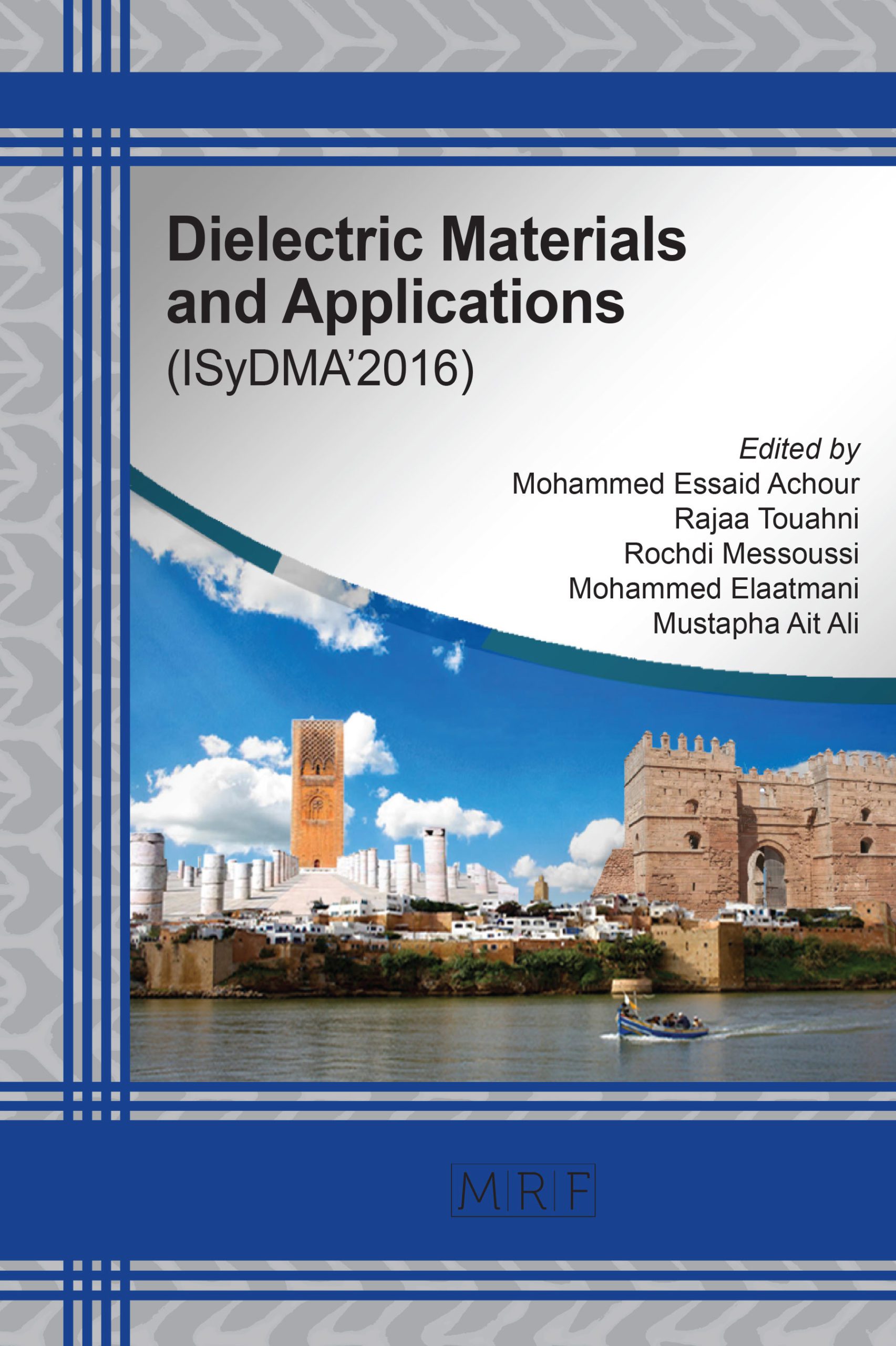O. IDIR, A. REFFAS, S. AMEUR, F. CHETIBI, H. MOULAI, I. KHELFANE, M. OUAGUENI, A. BEZAZ
Abstract. Transformer industry called upon insulating oils, among them mineral oils used since more than one century, and PCBs which are prohibited because of their high toxicity and non-biodegradability and it could be source of contamination of soils and waterways, in the other hand petroleum based mineral oils are going to run out according to many studies. For these reason many studies undertaken by researchers and industrial groups allowed improvements of the performances of mineral oils, and the design of new liquids of substitution to replace the PCBs such synthetic esters and silicones. Although they present good properties, they remain nonrenewable sources and poorly biodegradable substances, hence the necessity to seek other alternative oils that resolve both problems of biodegradability and durability, criteria that vegetable oils correspond perfectly. In this paper, we report results of the behavior of a vegetable oil (olive oil) subjected to a thermal stress of 110°C in an oven for 716 hours duration by checking the evolution of the electric and physicochemical properties in regular intervals of time. The results so obtained show a decrease in flashpoint and water content inducing an increase of breakdown voltage. However, a trend of increase in total acidity and viscosity are observed.
Keywords
Olive Oil, Transformers, Dielectric Liquids, Thermal Aging
Published online 12/10/2016, 6 pages
Copyright © 2016 by the author(s)
Published under license by Materials Research Forum LLC., Millersville PA, USA
Citation: O. IDIR, A. REFFAS, S. AMEUR, F. CHETIBI, H. MOULAI, I. KHELFANE, M. OUAGUENI, A. BEZAZ, ‘Vegetable oil electrical properties analysis for power insulation use’, Materials Research Proceedings, Vol. 1, pp 25-30, 2016
DOI: http://dx.doi.org/10.21741/9781945291197-7
The article was published as article 7 of the book Dielectric Materials and Applications
References
[1] U. U. Abdullahi, R. Yunus, and A. Nordin, “Use Of Natural Vegetable Oils As Alternative” The Institution of Engineers Journal, vol. 67, no. 2, pp. 4–9, 2006.
[2] I. L. Hosier, A. Guushaa, A. S. Vaughan, and S. G. Swingler, “Selection Of A Suitable Vegetable Oil For High Voltage Insulation Applications” Journal of Physics. 2009. http://dx.doi.org/10.1088/1742-6596/183/1/012014
[3] C. TRAN DUY, “Propriétés Diélectriques De Liquides Isolants D’origine Végétale Pour Applications En Haute Tension,”Thèse de doctorat, Université JOSEPH Fourier-Grenoble 1, 2009.
[4] C. P. Mcshane, J. Corkran, K. Rapp, J. Luksich “Natural Ester Dielectric Fluid Development Update”in Power and Energy Society General Meeting, pp. 1–5, 2009.
[5] IEEE Std C57.147, IEEE Guide for Acceptance and Maintenance of Natural Ester Fluids in Transformers,July2008.
[6] I. L. Hosier, A. Guushaa, E. W. Westenbrink, C. Rogers, A. S. Vaughan, and S. G. Swingler, “Aging of Biodegradable Oils and Assessment of their Suitability for High Voltage Applications,” IEEE Transactions on Dielectrics and Electrical Insulation, vol. 18, no. 3, pp. 728–738, 2011. http://dx.doi.org/10.1109/TDEI.2011.5931059
[7] H. Benabid, “Caracterisation De L’huile D’olive Algerienne, Apports Des Méthodes Chimiométriques” These de Doctorat, Universite Mentouri De Constantine, 2009.
[8] T. Suzuki, R. Oba, A. Kanetani, T. Kano, and T. Tamura, “Consideration on the Relationship between Dielectric Breakdown Voltage and Water Content in Fatty Acid Esters,” in IEEE conference on dielectric liquids, pp. 10–13, 2011. http://dx.doi.org/10.1109/icdl.2011.6015424
[9] M. Amanullah, S. M. Islam, C. Sammer, and I. Gary, “Evaluation of Several Techniques and Additives to De-moisturise Vegetable Oils and Bench Mark the Moisture Content Level of Vegetable Oil-based Dielectric Fluids.” In international conference of dielectric liquids, 2008.
[10]J. T. Mullen and N. Carolina, “Biodegradable electrical insulation fluids,” in Electrical Insulation Conference, pp. 465–468, 1997
[11]T. Iwasawa, K. Ohota, H. Mitsui, and M. Sone, “Effect of molecular hindrance on dc conductivity in dielectric liquids including water,” in Conference on Electrical Insulation and Dielectric Phenomena, pp. 709–712, 1996. http://dx.doi.org/10.1109/CEIDP.1996.564570
[12]M. Monfreda, L. Gobbi, and A. Grippa, “Blends Of Olive Oil And Seeds Oils : Characterisation And Olive Oil Quantification Using Fatty Acids Composition And Chemometric Tools . Part II,” Food Chemistry, vol. 145, pp. 584–592, 2014. http://dx.doi.org/10.1016/j.foodchem.2013.07.141
[13]A. Bendin, L. Cerretani, M. Salvador, G. Fregapane, and G. Lercker, “Stability Of The Sensory Quality Of Virgin Olive Oil During Storage,” Italian Food and Beverage Technology, pp. 5–18, 2010.
[14]Y. Xu , S. Qian, “Oxidation Stability Assessment of a Vegetable Transformer Oil under Thermal Aging,” IEEE Transactions on Dielectrics and Electrical Insulation, vol. 21, no. 2, pp. 683–692, 2014. http://dx.doi.org/10.1109/TDEI.2013.004073
[15]Y. Liu, J. Li, and Z. Zhang, “Gases Dissolved In Natural Ester Fluids Under Thermal Faults In Transformers,” in 2012 IEEE International Symposium on Electrical Insulation, 2012, pp. 223–226. http://dx.doi.org/10.1109/ELINSL.2012.6251462































